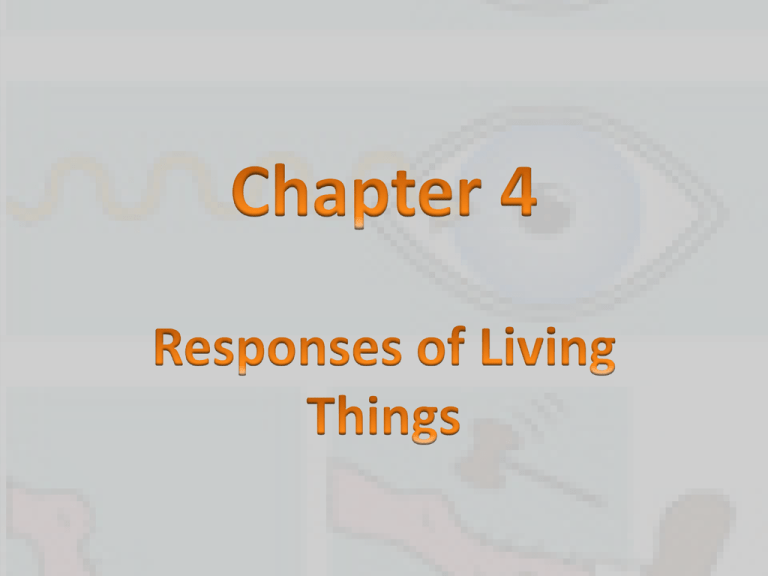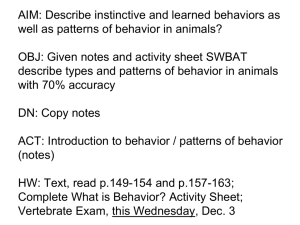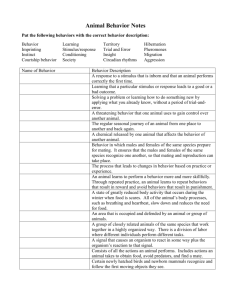Document 15960543
advertisement

1. environmentEverything that surrounds a living thing 5. stimulusanything that causes a living thing to react 2. external stimulus Anything in an organism’s environment that causes it to react 4. responsea reaction to a stimulus 3. internal stimulusanything within an organism that causes it to react 1. Shivering and putting on a sweater are an example of responses to cold. 2. A snake’s forked tongue helps it to smell. 3. Sea otters find food by being able to detect vibrations using their whiskers. 4. An example of internal stimuli is hunger pains. 5. For a moth, the sound of a bat is an external stimulus. 6. All living things react to their surroundings. 7. Many animals have 5 senses. They are sight, hearing, touch, taste, and smell. 8. Echolocation is a form of detection using sound waves. Bats and dolphins use echolocation. 9. Plants and animals react to both external and internal stimuli. 10. Plants react to stimuli even though they do not have 5 senses. 4. Learned behaviorA behavior that is taught of learned from experience 3. instinctA complex pattern of behavior that organisms of the same type are born with 2. Inherited behaviora behavior that an organism is born with and does not need to learn 1. behaviorThe way that a living thing acts or responds to its environment 1. Some animals hibernate, or go into a deep sleep, during the winter months when food is scarce. 2. Birds, whales, fish, and insects migrate, or move to another area, when it gets colder. 3. A reflex is a simple automatic inherited behavior. 4. As animals interact with their environment, they learn new behaviors. 5. Examples of learned behaviors are riding a bike, grooming each other, playing the piano, cooking, reading, speaking, and writing. 6. People and some animals can learn different behaviors. 7. Examples of an instinct are making a web, turtles moving toward the ocean after birth, hibernating, migrating, and building a certain kind of nest. 8. Learning different behaviors can help an organism survive.


